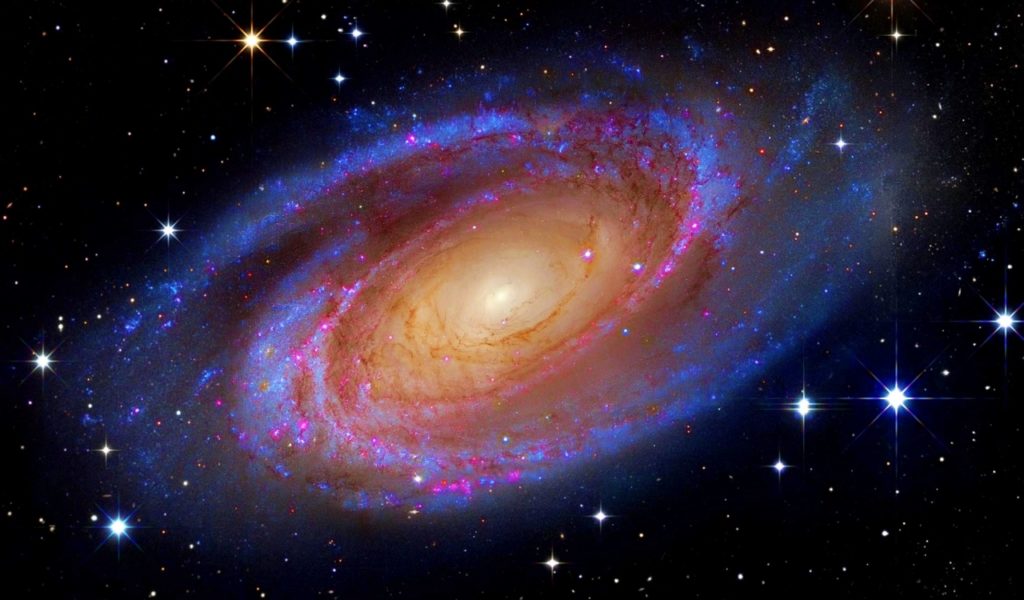Our Milky Way Galaxy has been making stars for billions of years. Many of those stars were then accompanied by planets and the rest is history. While we all knew the galaxy was making stars quite often, it was initially assumed to be on a moderate pace. Now, this could be far different than we thought.
Stick with us, as what we’re about to discuss will be a little complicated but we will explain it in the most easy-to-understand language possible. The reason we know the Milky Way might be producing more stars than we once thought has to do with gamma rays from aluminum-26. This is a radioactive isotope that comes primarily from massive stars.
These rays recently revealed, according to researchers, that the Milky Way converts roughly four to eight solar masses of interstellar gas and dust into new stars each year. While that might not seem like a big deal to some, it’s a massive deal to astronomers and cosmologists.
This is roughly two to four times the initial estimate. This also means that each year, the Milky Way is birthing anywhere between 10 to 20 brand-new stars
What This Means

While 10 to 20 new stars might not seem like that much or a big deal, you have to think about this in universal terms. Essentially, look at it on the “million-year concept.” A million years in our universe is pretty much nothing due to being around 14 billion years now.
Every one million years, we will be seeing 10 to 20 million new stars in the Milky Way. To comprehend this, in just one million years, all the new stars produced could fill 10,000-star clusters. What might be sad to hear is that many galaxies that orbit our Milky Way will make no new stars at all!
University of Würzburg Astrophysicist, Thomas Siegart, claimed that the star formation rate is very important to understanding galaxy formation. He went on to say that the more stars a galaxy makes, the faster it enriches itself with oxygen, iron, and other major elements that stars create,
These elements then will alter star-making gas clouds and change the relative number of large & small stars that gas clouds form. Siegart and his colleagues studied and observed intensity and spatial distribution emission from aluminum-26 in the Milky Way.
They found that during its life, a star will create this isotope but it will also create it in death too. Yet during its lifetime, the star will blow this aluminum into space with a strong wind. If a star explodes when it died, that resulting supernova forges even more.
Meanwhile, the isotope, with a half-life of 700,000 years, will decay and give off gamma rays. Of course, gamma rays are similar to x-rays in that unlike visible light, they are able to penetrate the dust that can cloak the youngest stars in a galaxy. This led Siegart’s team to heavily study gamma rays.
Gamma Rays In Our Universe

While most know the term “gamma rays” due to the Incredible Hulk comics (even though it was about gamma radiation), they do not exactly work the way many think. In our universe, they can be both helpful and very deadly. Interestingly, the more stars a galaxy spawns, the more these gamma rays will emerge.
According to researchers, the finding of a star formation rate at four to eight solar masses is a huge find. We used to believe the Milky Way produced only two solar masses per year.
University of Bonn Astronomer, Pavel Kroupa, claimed that the revised rate is very realistic. He went on to say:
“I’m very impressed by the detailed modeling of how they account for the star formation process. It’s a very beautiful work. I can see some ways of improving it, but this is really a major step in the absolutely correct direction.”
It should be noted that it’s not exactly easy to tell how far gamma rays have traveled before they reach us. If some of the observed emissions arise nearby, even within just a few hundred lightyears of us, then the galaxy has less aluminum-26 than these researchers calculated. That would mean that the star formation rate is on the lower side of the newer estimate.
In spite of this, it’s unlikely we’re on the smaller end of just two solar masses per year. The Milky Way is certainly a much bigger star creator than we once thought. It is by far the biggest creator among more than 100 galaxies nearby, known as “The Local Group.”
Funny enough, the largest galaxy in The Local Group is actually our neighbor Andromeda. Yet it only converts a fraction of the solar mass gas and dusts the Milky Way produces annually. We might not be the largest, but the Milky Way is certainly the one producing the most stars.